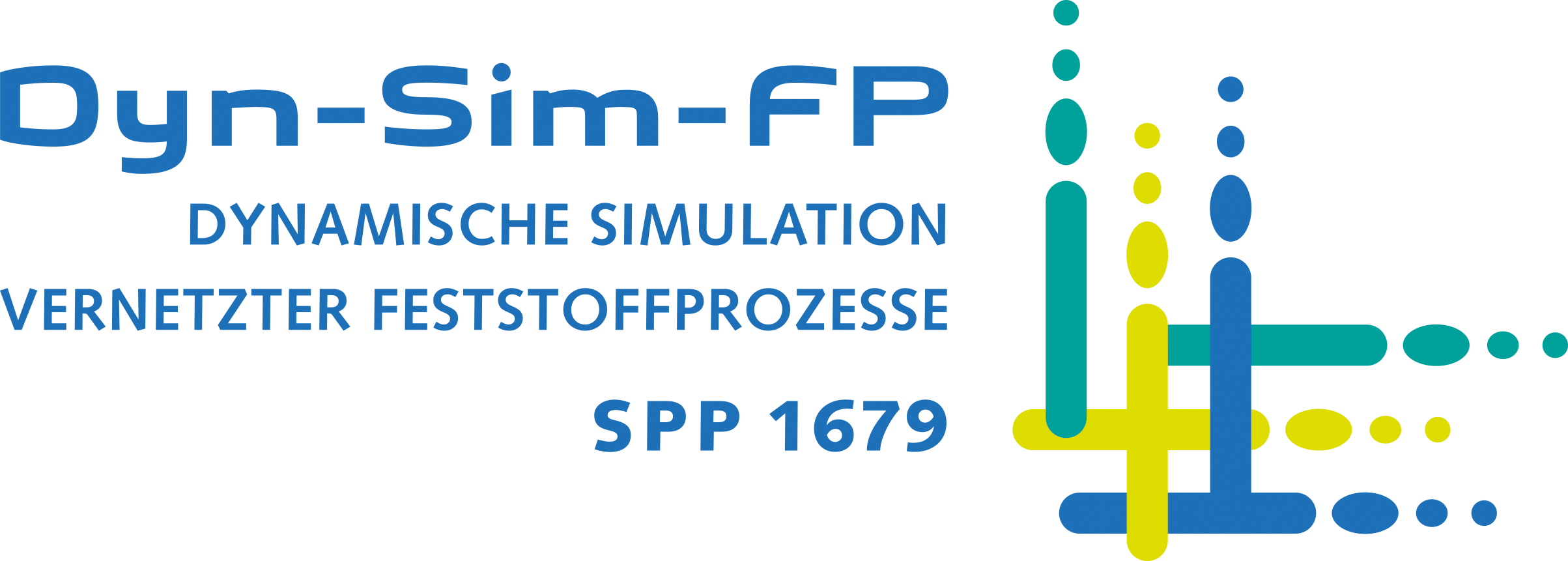Numerical solution methods for coupled population balance systems for the dynamic simulation of multivariate particle processes at the example of the shape-selective crystallization
- Institutes:
Weierstrass Institute for Applied Analysis and Stochastics, Berlin
Weierstrass Institute for Applied Analysis and Stochastics, Berlin
Institute of Process Engineering, Chair for Process Systems Engineering, OvGU Magdeburg- Projekt leaders:
Prof. Dr. Volker John , WIAS Berlin
Prof. Dr. Sabine Le Borne, TU Hamburg-Harburg
Prof. Dr.-Ing. Kai Sundmacher, OvGU Magdeburg- Research assistants:
M. Sc. Robin Ahrens, TU Hamburg-Harburg
B. Sc. Felix Anker, WIAS Berlin
M. Sc. Lusine Shahmuradyan, TU Hamurg-Harburg
M. Sc. V. Wiedmeyer, OvGU Magdeburg
Objective of the project
In process engineering, solid state processes are described by population balance systems. These
systems consist in general of coupled partial differential equations characterizing the continuous phase
and a population balance equation to describe the dynamic evolution of the solid state. The solution of
the population balance equation is the distribution density f(t,r,x), which describes the distribution of
particles of one or more properties x with respect to time t and location r.
The goal of the project is the comparison and development of numerical methods for the solution of
population balance systems. As an application problem, a shape-selective crystallization process is
considered for different model substances, which can be described by one or more property
coordinates. Optimally designed growth-dominated and aggregation-dominated benchmark
experiments are performed. These experiments allow to identify kinetic parameters such as nucleation
rate, growth rate and aggregation kernels and to evaluate the numerical accuracy of the applied
solution schemes. Using the developed methods and obtained kinetics, a new process concept for the
continuous shape-selective crystallization shall be developed and optimized.
Work programme
In this project, the dynamic behavior of a crystallization process, which is distributed in the physical
space and in the property space, is modeled, simulated and finally optimized. A continuous cooling
crystallizer is considered for shape-selective crystallization. Reliable process models, process kinetics
and numerical tools are required to design, simulate and optimize the process. Therefore, numerical
tools need to be identified for efficient and accurate process simulation.
In order to identify the kinetics of the dominant dynamic population effects (growth, dissolution and
aggregation) separate benchmark experiments are performed and modeled. Optimal experimental
design is applied for an efficient identification of crystallization kinetics. At first, crystals that can be
described in a one-dimensional property space are investigated. During the project, crystal systems with
two or three characteristic property coordinates are also considered.
A flow-through cell is used to generate measurement data and thus to control the process. In the
project, algorithms for image processing and image evaluation are developed. In particular, algorithms
need to be designed for crystal aggregates and for crystals with three or more property coordinates.
The performed experiments allow an estimation of the process kinetics. At the same time, for the
project partners, the experiments are benchmark problems that can be used to test the investigated
numerical solution methods. Finally, considering the identified crystallization kinetics and the developed
numerical methods, a new process for continuous shape-selective crystallization shall be designed,
optimized and realized experimentally.
Population balance systems contain several transport-dominated equations, e.g. for the temperature or
the distribution density. Such equations require special discretizations to perform stable simulations.
Besides stability, also accuracy of the computed solutions, physical consistency (no spurious
oscillations), and efficiency of the simulations are of importance. A universal method that possesses all
these properties is not known. In the project, methods are studied and further developed that are based
on so-called algebraic stabilizations. Such methods proved to be superior to other methods in
competitive studies.
For an efficient simulation of the population balance system, an efficient evaluation of the source and
sink terms is required. This applies especially for the aggregation term which is a convolution integral.
The integral term is usually numerically expensive to evaluate and often dominates the total simulation
cost.
Univariate population balance systems are considered initially. A newly developed approach for the
evaluation of the aggregation integral reduces the originally quadratic complexity to an almost optimal
complexity N log N, where N is the dimension of the approximation space. This approach is based on a
separable approximation of the aggregation kernel and a subsequent fast Fourier transformation. At
first, the population density function is discretized using piecewise constant functions on an equidistant
grid. Afterwards, test functions of higher order are investigated on locally refined grids.
The benchmark problems are used to test and evaluate the developed and implemented numerical
methods. The numerical solutions are compared with experimental data from the research group
Sundmacher. The most successful approach is extended to bi- and multi-variate cases. Furthermore, an
interface to the software library ParMooN will be established such that a simulation of population
balance systems with growth and aggregation is possible. The developed modules and solvers will also
be integrated in Dyssol.
Contribution of the research groups participating in project C2:
Research group Le Borne, TU Hamburg-Harburg
- Implementation of a new efficient method for the evaluation of aggregation integrals with piecewise
- constant test functions on uniform grids
- Systematic comparison of existing methods with the new approach
- Extension to locally refined grids
- Extension of test functions of higher-order, criteria for choice of approximation order
- Comparison of numerical results with experimental data of RG Sundmacher
- Interface to the software library ParMooN of the RG John
- Extension of the most successful approach to multivariate problems
Research group John, WIAS Berlin
- Implementation and systematic evaluation of numerical methods for convection dominated differential operators based on experiments from research group Sundmacher
- Direct discretization (finite elements, finite differences)
- Method of moments (QMOM, DQMOM)
- Operator splitting methods
- Pivot methods
- Growth and aggregation dominated processes (interfaces to program libraries of the research group Le Borne)
- In the beginning univariate and later bivariate population balance systems
- Development of hybrid discretization (finite elements for external and internal coordinates)
Research group Sundmacher, OvGU Magdeburg
- Implementation and operation of an experimental plant for benchmark experiments
- Characterization of experimentally produced product particles
- Identification of crystallization kinetics for growth, dissolution and aggregation
- Optimal design of experiments
- Efficient estimation of the kernel and of the kinetic parameters
- Dynamic modeling of the benchmark experiments
- Development and optimization of a new process concept for the continuous shape-selective crystallization


